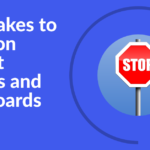The last post, 5 ways to check the project status is correct, provided 5 steps that could help validate that a project status report was accurate. Following these should identify where there are areas of concern. However, the real goal is to continually improve the quality of the reports. This is much harder than it sounds for a number of reasons including:
- Project managers do not know what is required
- Project managers are not aware there is an issue – they have not been told
- Project managers / sponsors do not see why there is an issue – the reports are good enough
Below are some steps that can be taken to address these points and result in improved reporting.
Project Report Template
Project reports should be structured and contain space for all of the appropriate / required information to be provided.
Many project managers will have reports that they have developed and used in the past and, naturally would like to use them for their current project. If this is the case, ask if you can review the report structure and make recommendations to help ensure the correct information is provided.
A better solution is to develop a standard report template and issue to all projects. When creating the design, create areas of input that will help drive the user to provide the correct information. Take a look at the Project Templates page for the other benefits of using standard templates (including making the consolidation much easier).
Training and Guidance
It is a good first step to issue a good template. However, do not assume that the project managers know how to complete the template, what information should be included, how the information should be written, etc.
Training is very important. Make sure that guidance is issued and available for future use (i.e. on an Intranet site). Conduct face to face or virtual training.
Explain:
- Context: The purpose, objectives of the reporting
- Audience: who will be reading (different writing styles may be required)
- Inputs: Explain each field on the report and examples of what is required
- Frequency: How often the report is required and period it should cover
- Sign-off: Who should review and sign-off before submission (i.e. sponsor?)
Allow questions to be asked. Make sure the project manager knows how to ask questions going forward.
Regular Reviews
Set up regular review meetings with the project managers, ideally before the status report is submitted. During the review session, you jointly review the report. This will allow questions to be raised where something is not clear and other recommendations to be made.
Caution: make sure that the review is conducted in a constructive way. If not there is a risk that it could leads to the project manager becoming defencive and not taking on board any of the recommendations.
Review and Feedback
Post the submission the reports will be reviewed by a wider audience. Ensure that there is a mechanism for collecting any feedback and passing this back to the project manager. If they are not aware of concerns, requests, etc, they can not change.
The feedback means that the project manager knows that the reports are being used and not just a “form filling exercise”. They also will be mindful that the inputs need to be accurate.
 Summary
Summary
Improving the quality of project status reports will not just happen on it’s own. You need to take actions. Simple steps being:
- Define standard project report template
- Train and educate the project managers
- Hold regular reviews
- Provide feedback
Implementing these simple steps should lead to an improvement in the quality of the project status reporting.






